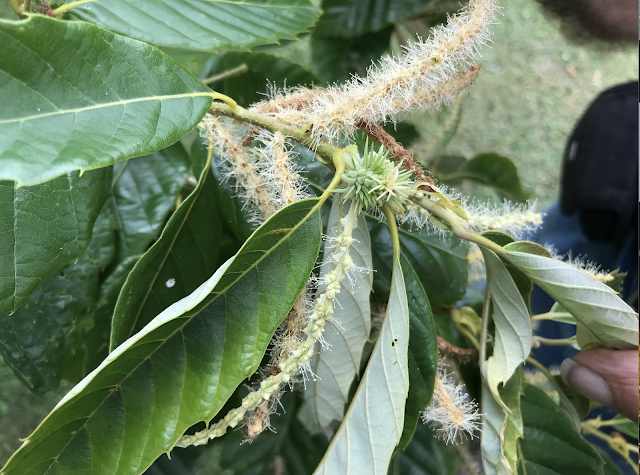American Chestnuts
The American chestnut tree was an iconic species to the Appalachian ecosystem; known for its rapid growth, high yield harvest and quality of timber. Chestnuts are an important keystone species to hardwood ecosystems because of the nut abundance and their nutritional value. Chestnuts also had a very economical importance because the wood is highly rot resistant. This made chestnuts very popular for building structures such as log cabins and railroad ties. At the start of the twentieth century, it was said that one in every four trees in Pennsylvania was an American chestnut. In the 1920’s, the chestnut blight had found its way to the United States from the Chinese chestnut and had begun to move through the landscape. By the 1940’s, the American chestnut had been removed from the Appalachian forests due to the devastation of the chestnut blight. Biologists suggest that this one of the greatest ecological disasters in history. Today, groups such as the American Chestnut Foundation, the USDA, Penn State, and Virginia Tech conduct genetic research to create a blight resistant American chestnut. The Chinese chestnut is blight resistant, so creating a Chinese and American chestnut hybrid could prove to be blight resistant.
Jim Walizer, a private forester has been conducting his own chestnut research for the last 20 years. He believed that the research being done by the American Chestnut Foundation and the universities were being useful but not accurate to the goal of chestnut restoration. The majority of Chinese chestnuts in China were trained to be apple like trees. This means the trees would grow more shrub like rather than tall timber-like, similar to the American chestnut.
In the mid 1920’s, researchers traveled to Northern China to find timber-like Chinese chestnuts. Once those trees with the ideal genetic traits were found, they were brought back to the United States for research. There were three plantings established with these timber-like Chinese trees in Pennsylvania, South Carolina, and Kentucky. This research project then became underfunded and forgotten about. Jim Walizer began conducting his own historical research nearly 70 years later to find these timber-like Chinese trees and sure enough he did.
After collecting nuts from these timber-like Chinese trees, he began his own research orchard on his family farm in Zion, Pennsylvania. He began a different breeding program/cycle then the American Chestnut Foundation and nearly 20 years later, is finding remarkable success. Walizers chestnuts grow timber-like, grow faster, produce higher nut yields, and survive the blight. The American Chestnut Foundations BC3F2 chestnuts, grow apple-like and don’t always survive the blight.
Below is a picture of Walizers orchard with successful Chinese and American Chestnut hybrids.
In the picture below is an example of chestnut blight killing a tree.
Walizer Chestnuts stop the chestnut blight by sealing the wound.
To read more about Walizer Chestnuts read my previous blog post: Walizer Chestnuts










Comments
Post a Comment